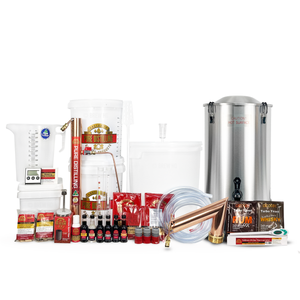Conversion Calculator
Disclaimer
Conversion between various units of density can be complex. Not all conversions are straightforward; for instance, specific gravity and °Brix measure different physical properties and are typically determined using different instruments. Consequently, some conversions rely on polynomial fits to experimental data, resulting in approximate rather than exact values.
Limitations
Different Scales: Each of these measurement scales (Brix, specific gravity, density, Plato, Baume, and dissolved sugar) is designed for specific types of solutions or contexts. Conversions might not be perfectly accurate across all types of solutions. For example, the same formula might not work equally well for pure sugar solutions and alcoholic solutions.
Temperature: Measurements like specific gravity and density can change with temperature. If the temperature isn’t consistent or properly accounted for, the conversion can be inaccurate. Different scales also have different temperature compensation methods. When measuring a sample ensure measurement is taking place at the right temperature or use a temperature correction to calculate the true reading.
Solution Composition: These conversions often assume a specific composition of the solution. For instance, Brix measures sugar content, but in a brewing context, there are other dissolved substances like alcohol, proteins and other dissolved solids that can affect readings. This means the conversion might not be perfectly accurate unless the solution composition is well-known and accounted for.
Non-linear Relationships: The relationships between these scales are not always linear. This means a simple multiplier might not work for all values. For example, the relationship between specific gravity and Brix is more complex than just a direct proportion and instead relies on a polynomial.
Instrument Precision: Different instruments used to measure these scales (like refractometers for Brix and hydrometers for specific gravity) have their own precision limits and potential for error. Using less precise instruments can introduce errors in the conversion.
Ethanol Content: In brewing, the presence of ethanol complicates conversions because it changes the density of the solution. Most standard conversion formulas don’t account for varying ethanol concentrations, leading to inaccuracies in these contexts.
Calibration: Instruments might be calibrated differently or incorrectly calibrated. For instance, a hydrometer calibrated for pure water might give slightly different readings compared to one calibrated for wort (unfermented beer).
Calculations Explanation
Brix to Specific Gravity: The specific gravity (SG) is calculated from Brix using the formula:
SG = 0.00000005785037196 * Brix³ + 0.00001261831344 * Brix² + 0.003873042366 * Brix + 0.9999994636
Specific Gravity to Brix: The Brix value is calculated from specific gravity (SG) using the formula:
Brix = 143.254 * SG³ - 648.670 * SG² + 1125.805 * SG - 620.389
Density to Specific Gravity: The specific gravity (SG) is calculated from density (g/L) using the formula:
SG = Density / 1000
Plato to Specific Gravity: The specific gravity (SG) is calculated from Plato using the formula:
SG = 1 + (Plato / (258.6 - (Plato / 258.2) * 227.1))
Baume to Specific Gravity: The specific gravity (SG) is calculated from Baume using the formula:
SG = 145 / (145 - Baume)
Dissolved Sugar to Brix: The Brix value is calculated from dissolved sugar (g/L) using the formula:
Brix = Dissolved Sugar / 10
Specific Gravity to Plato: The Plato (PA) value is calculated from specific gravity (SG) using the formula:
PA = -616.868 + 1111.14 * SG - 630.272 * SG² + 135.997 * SG³


